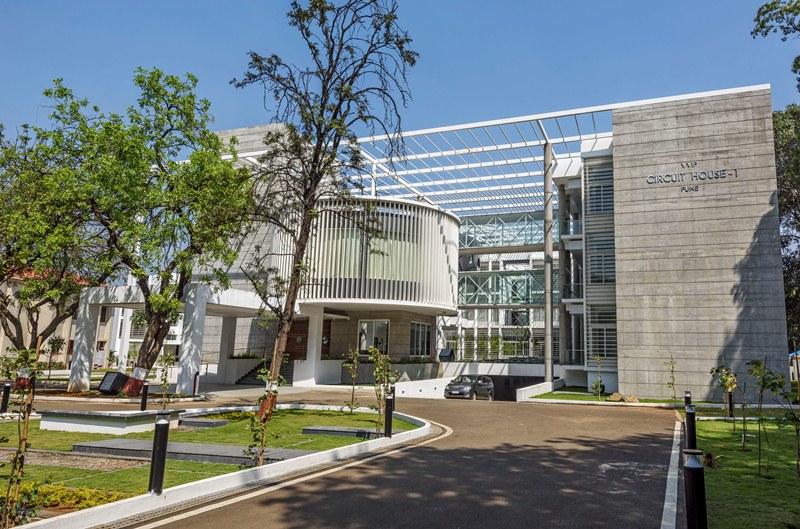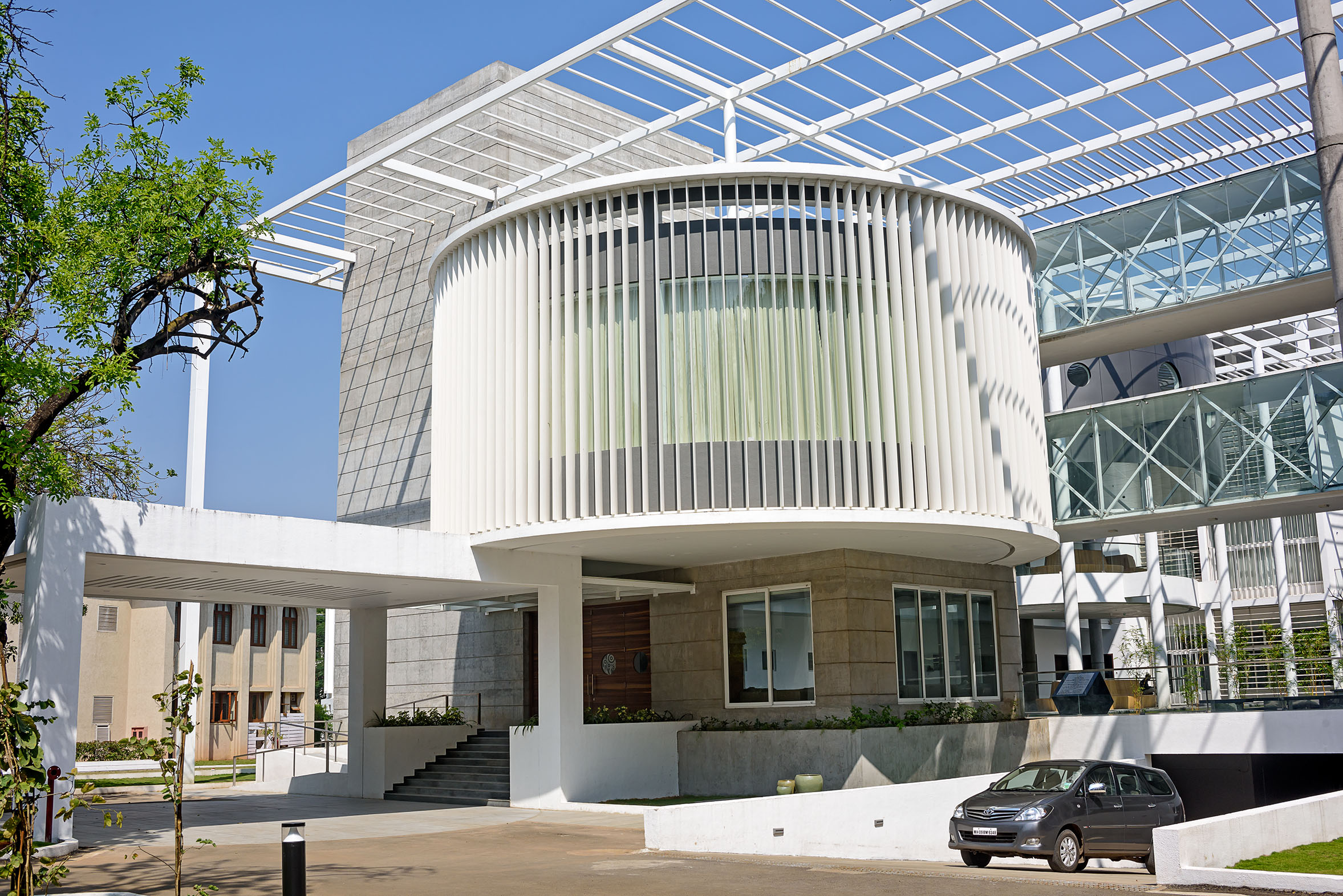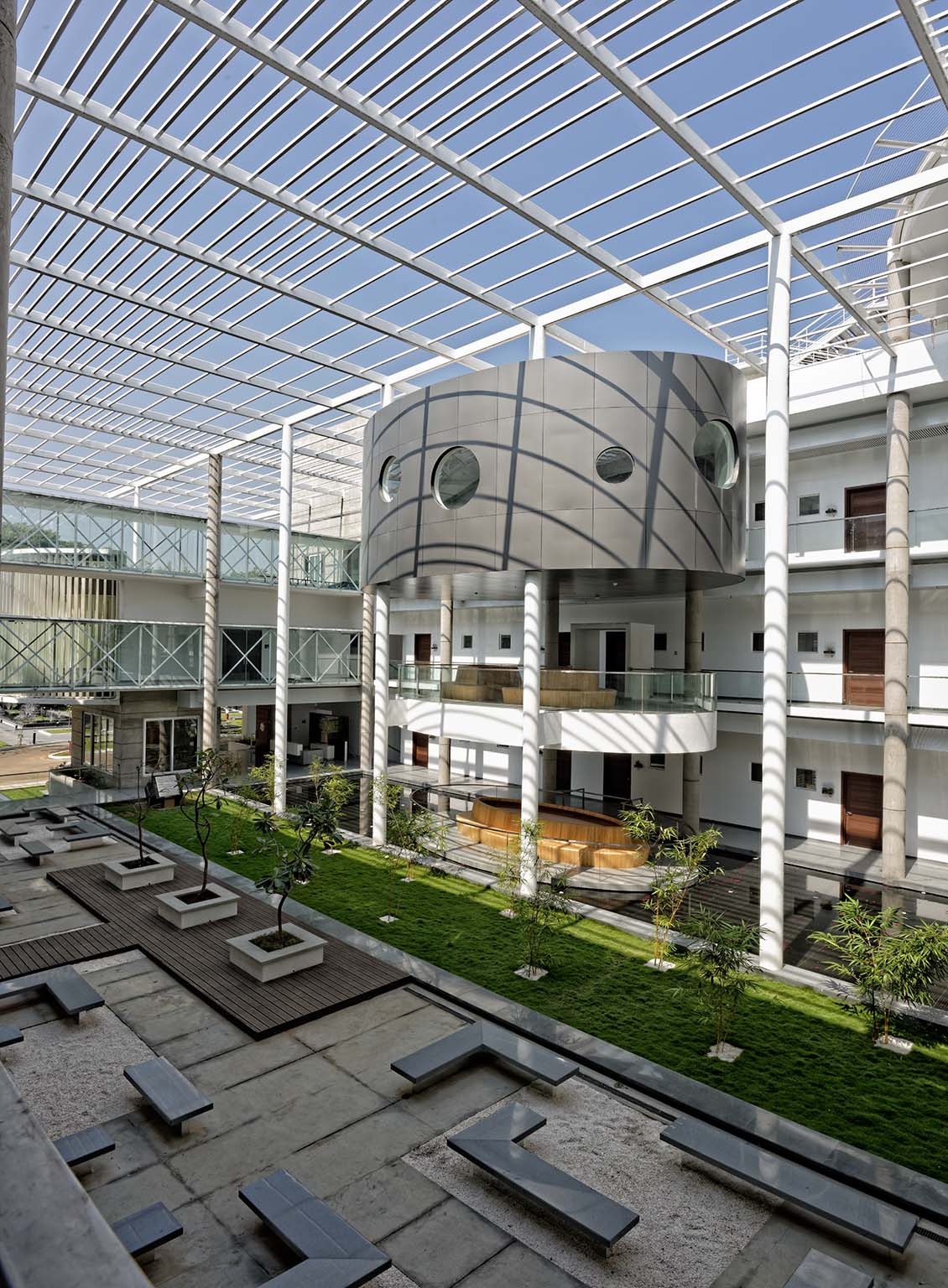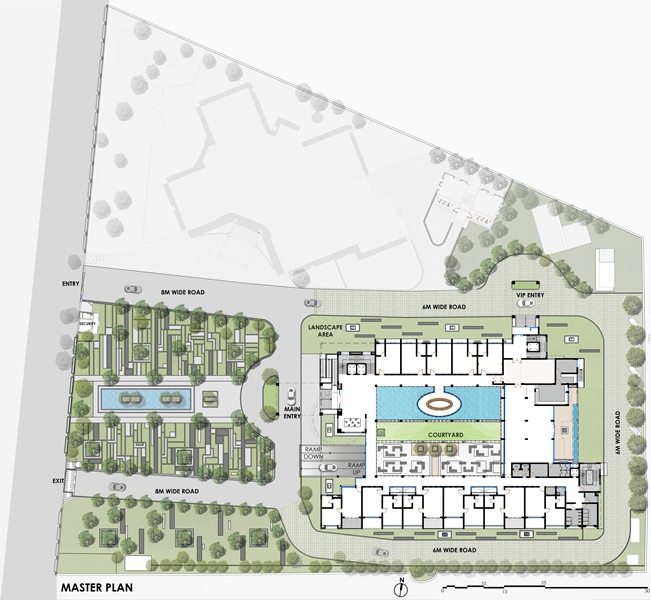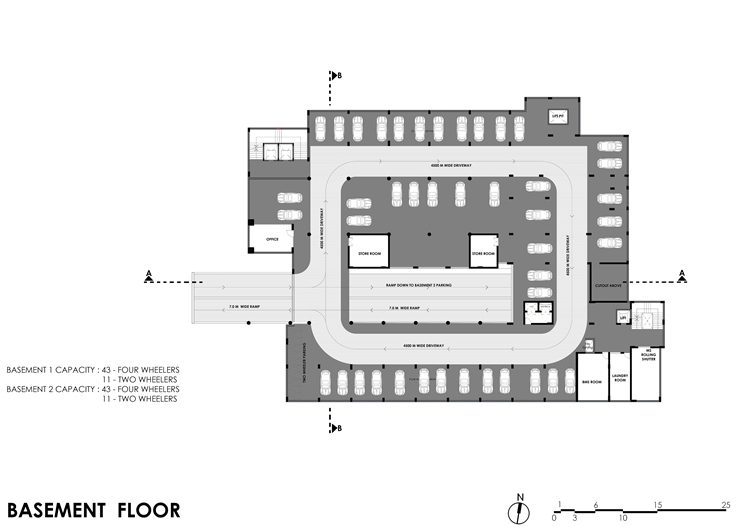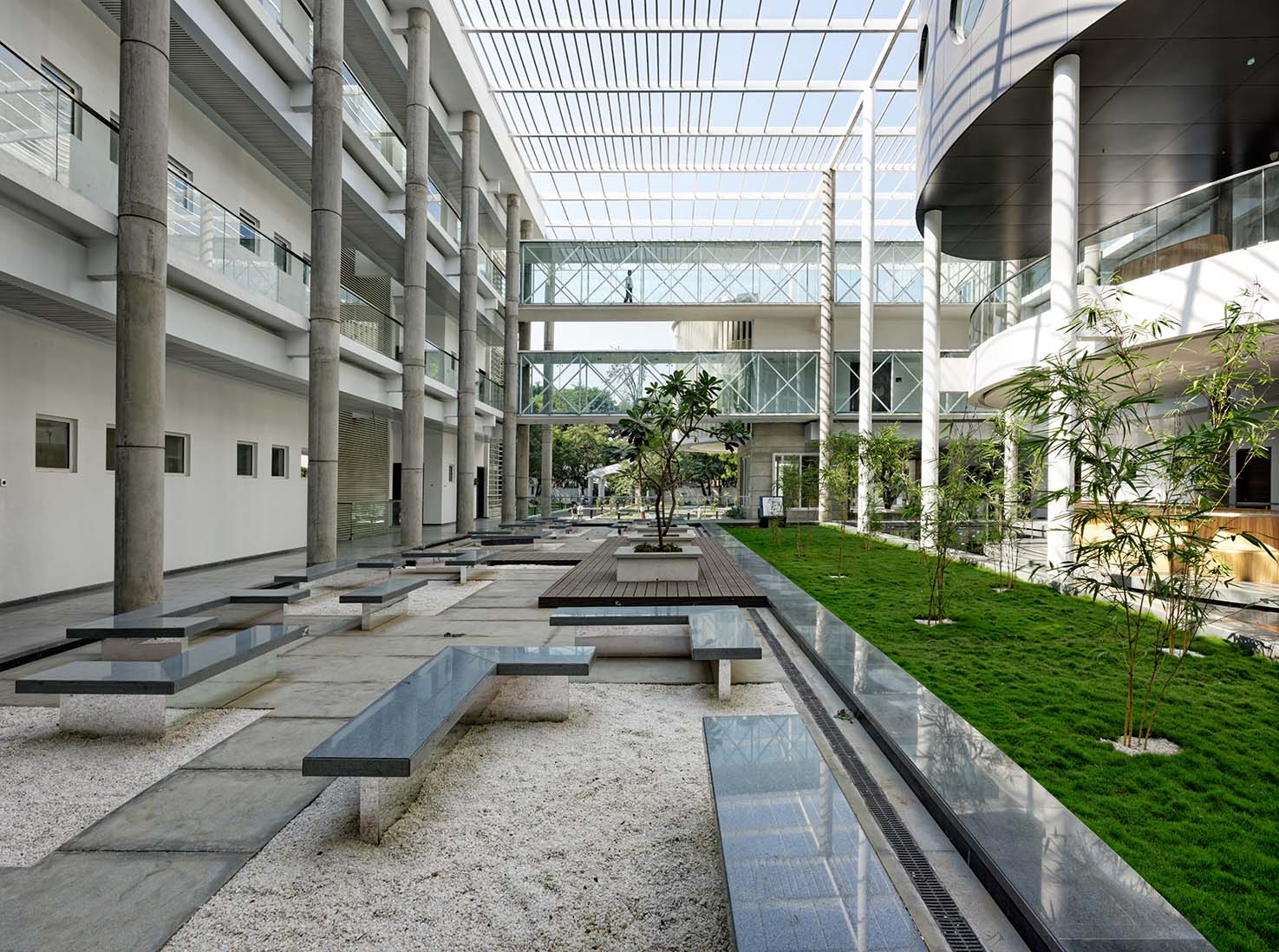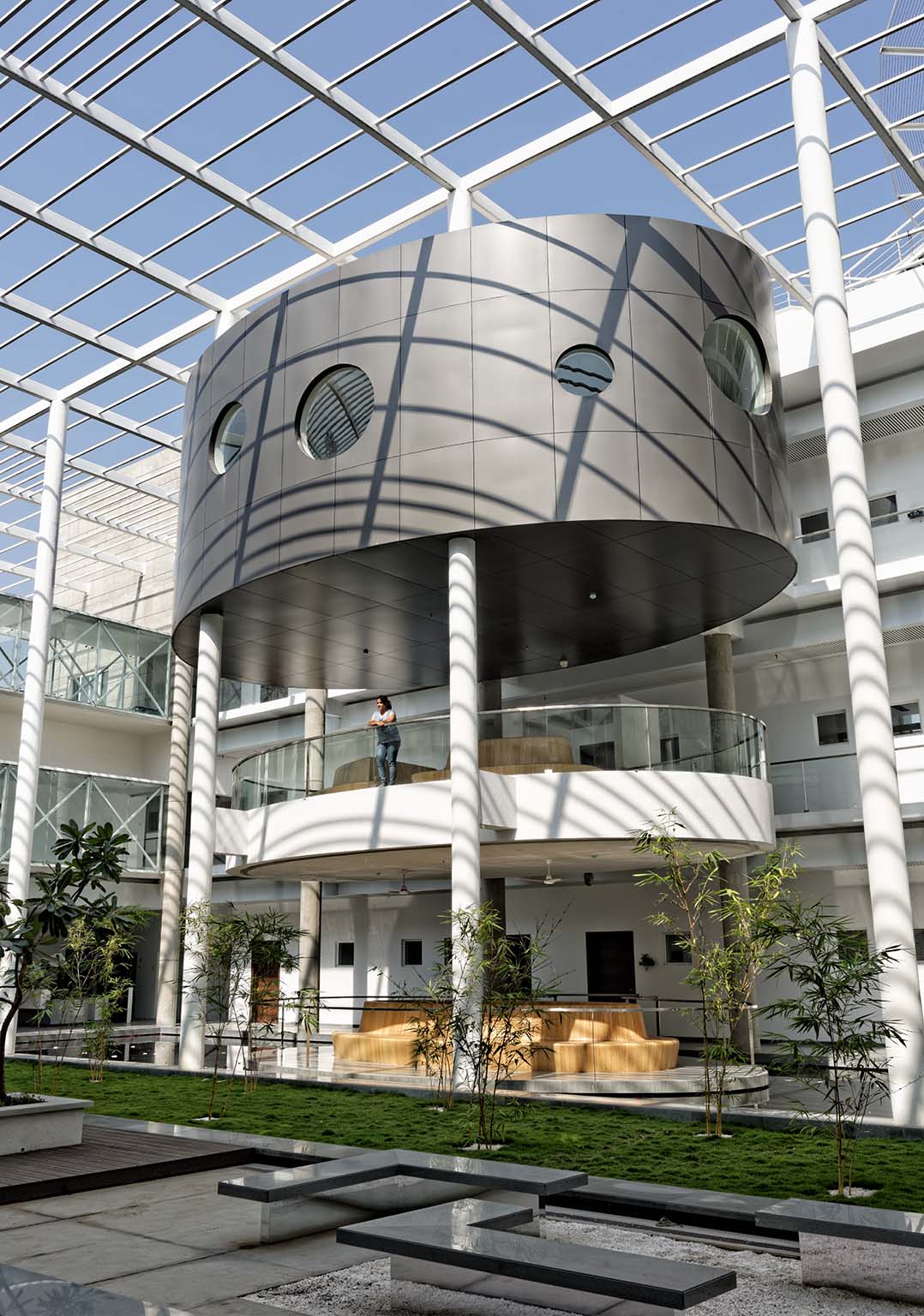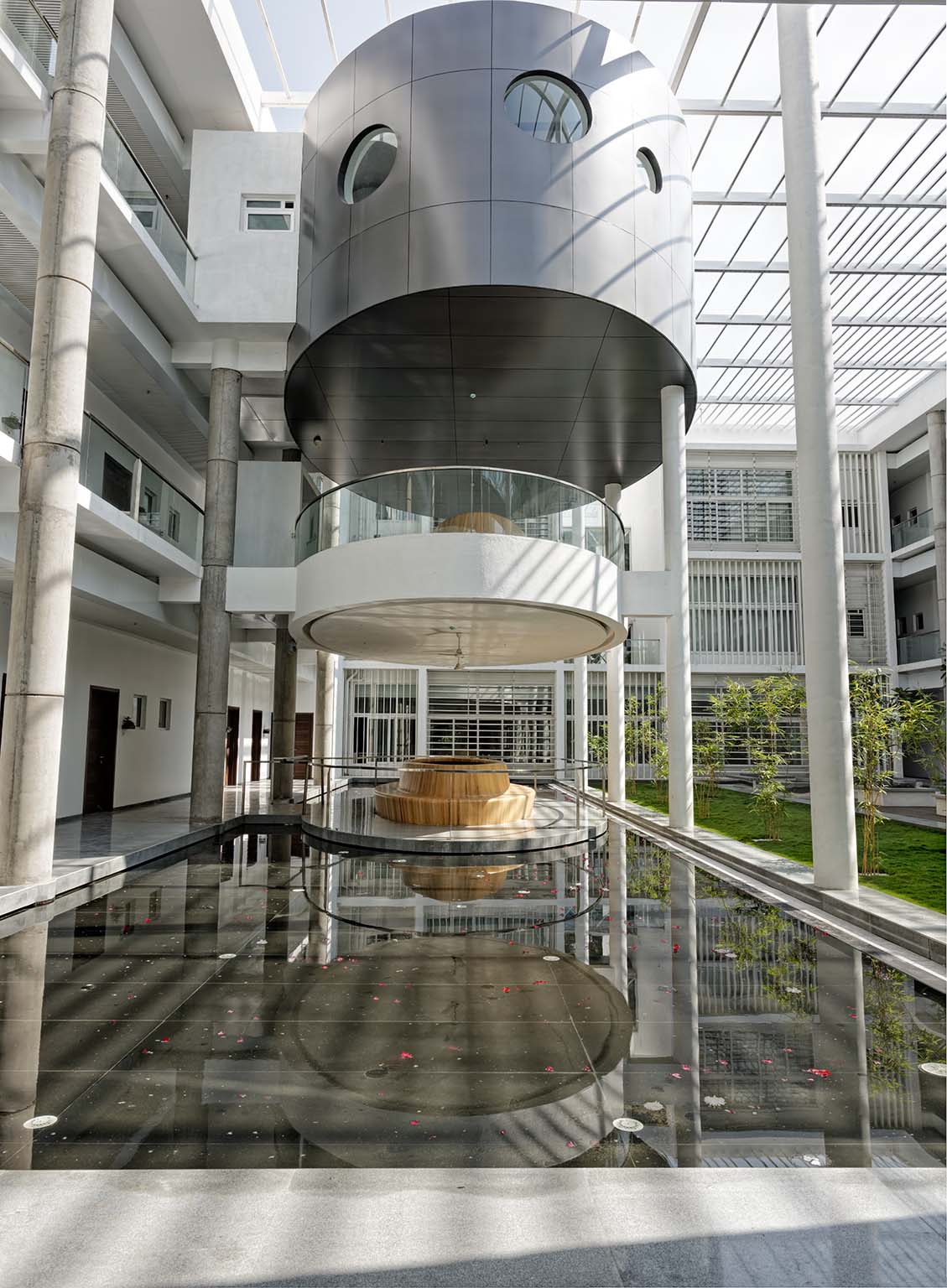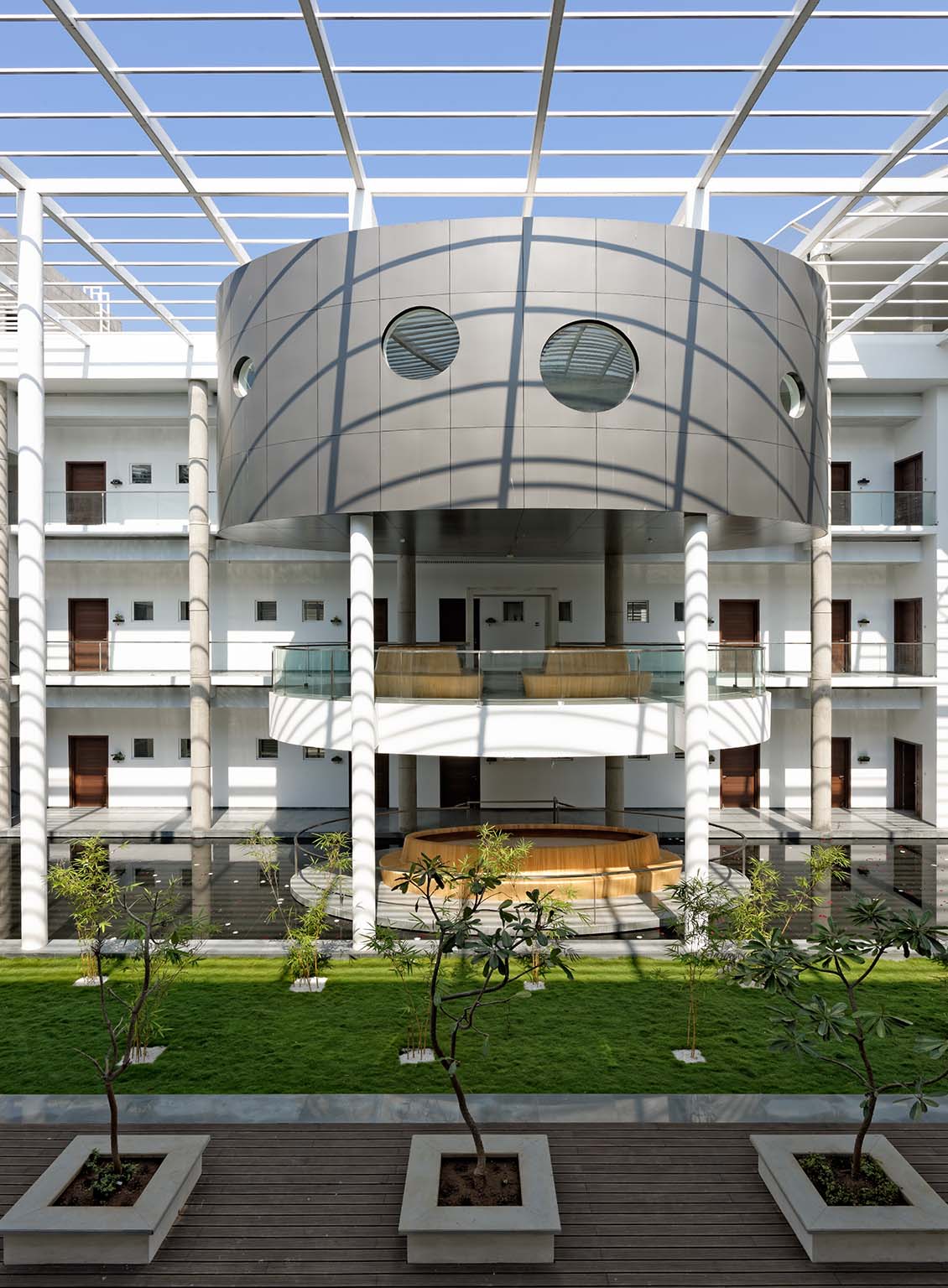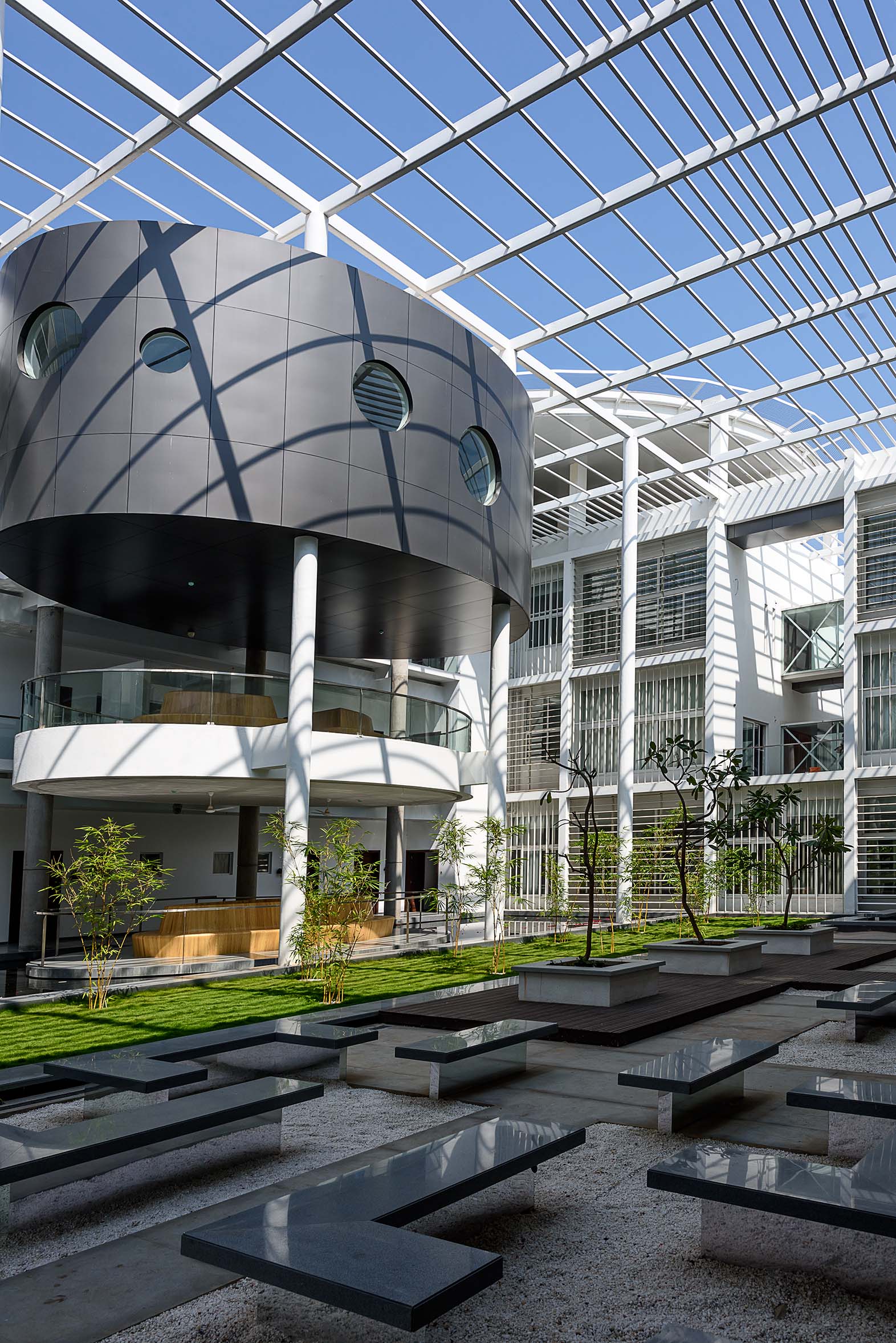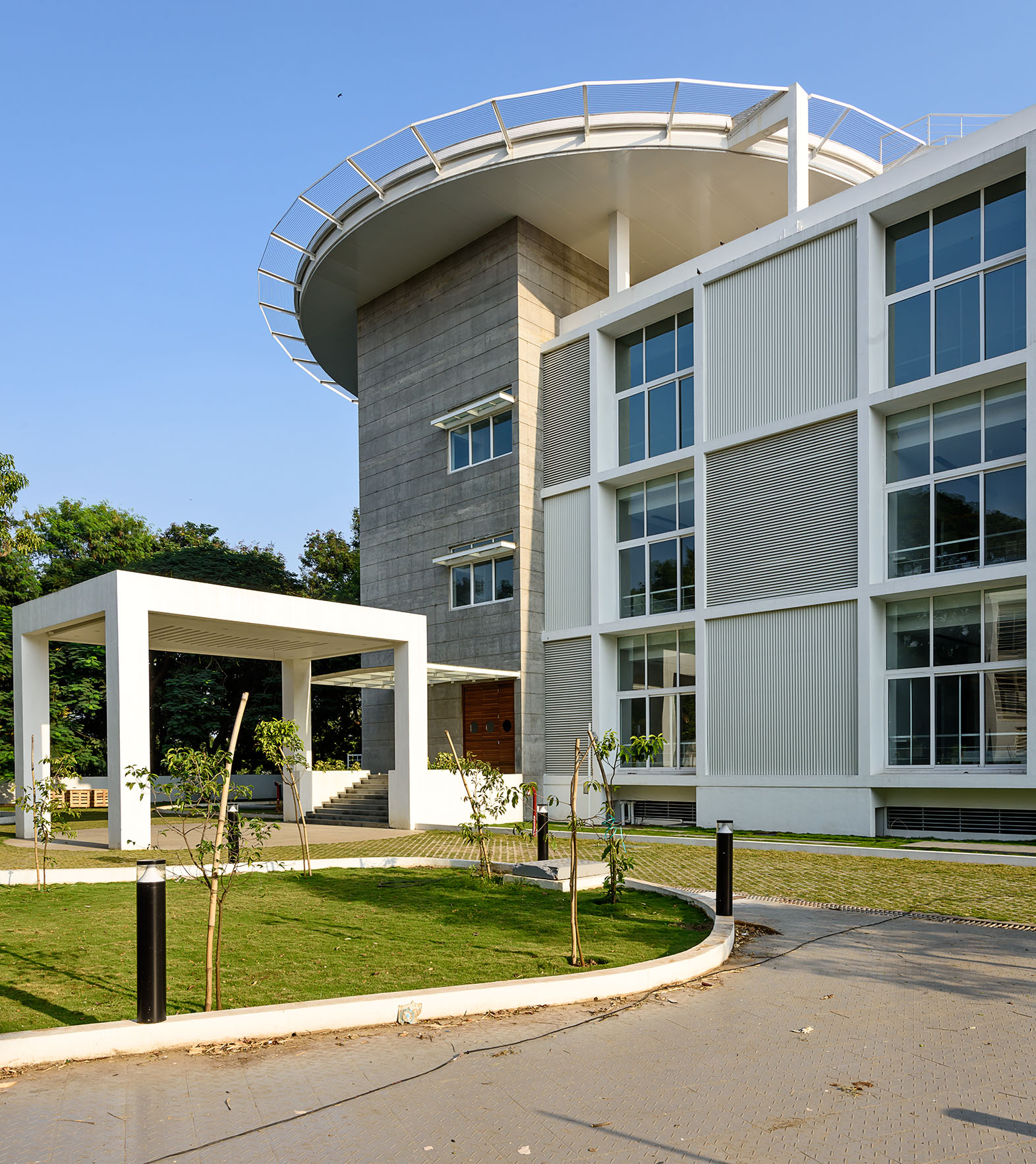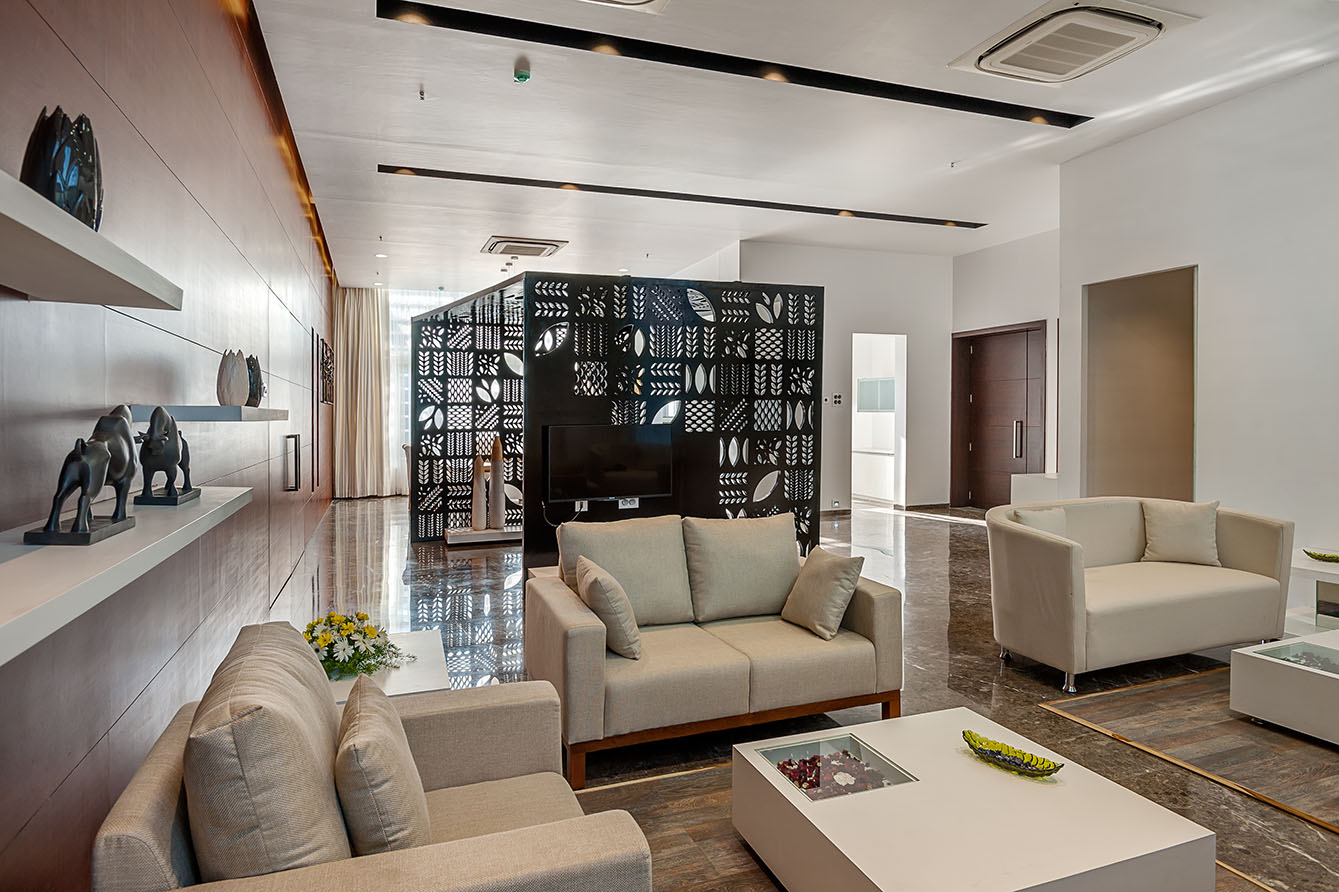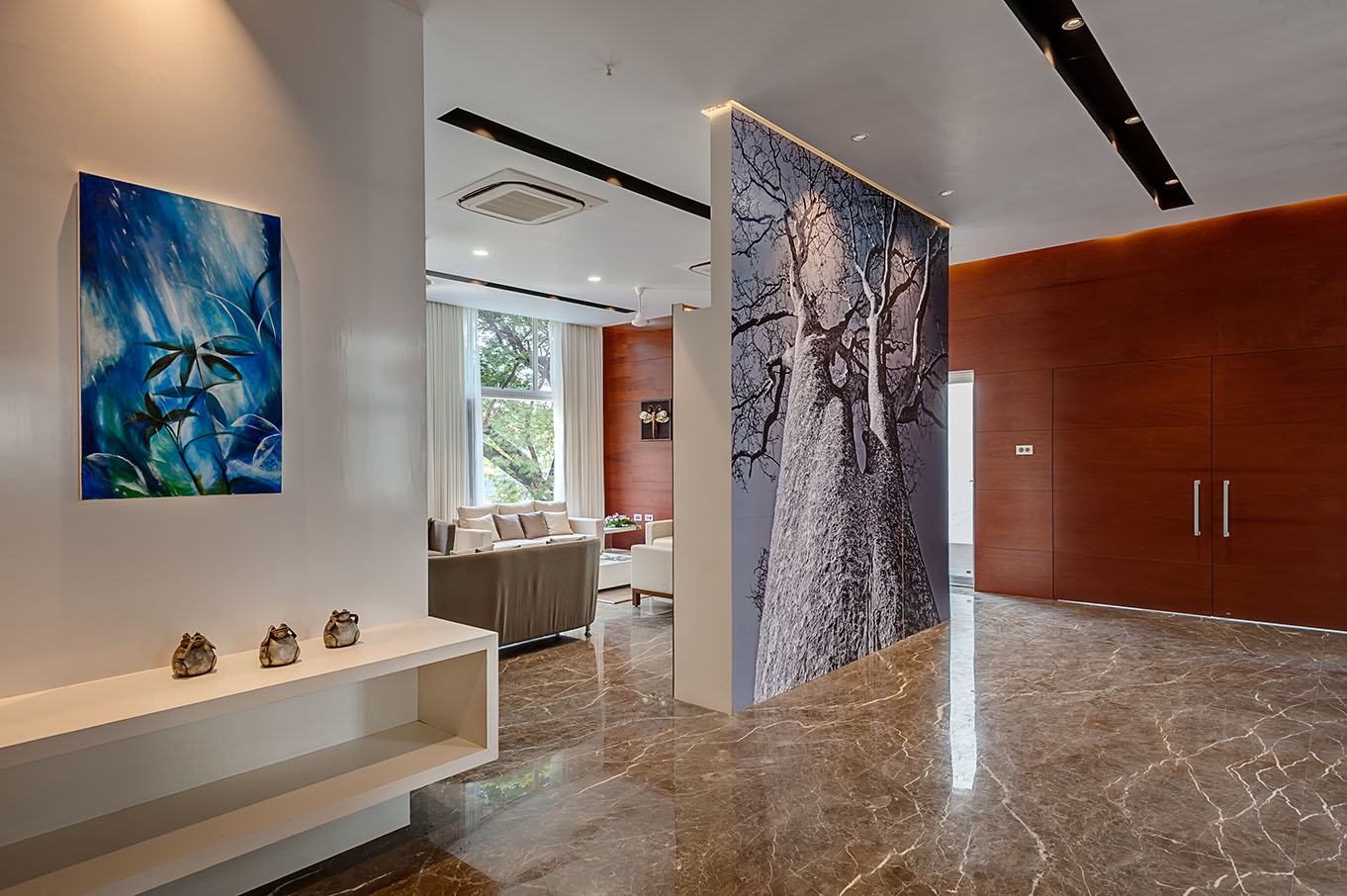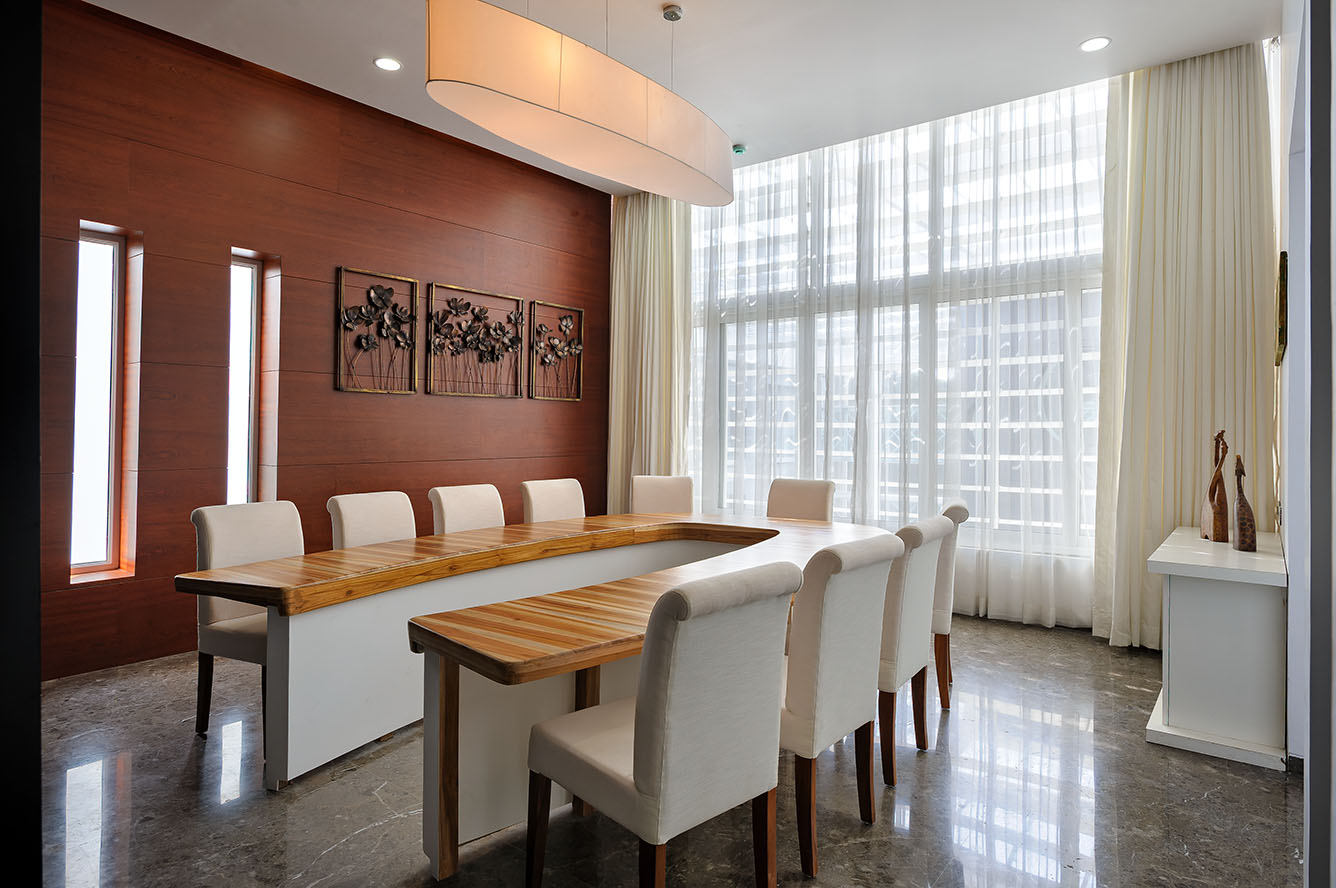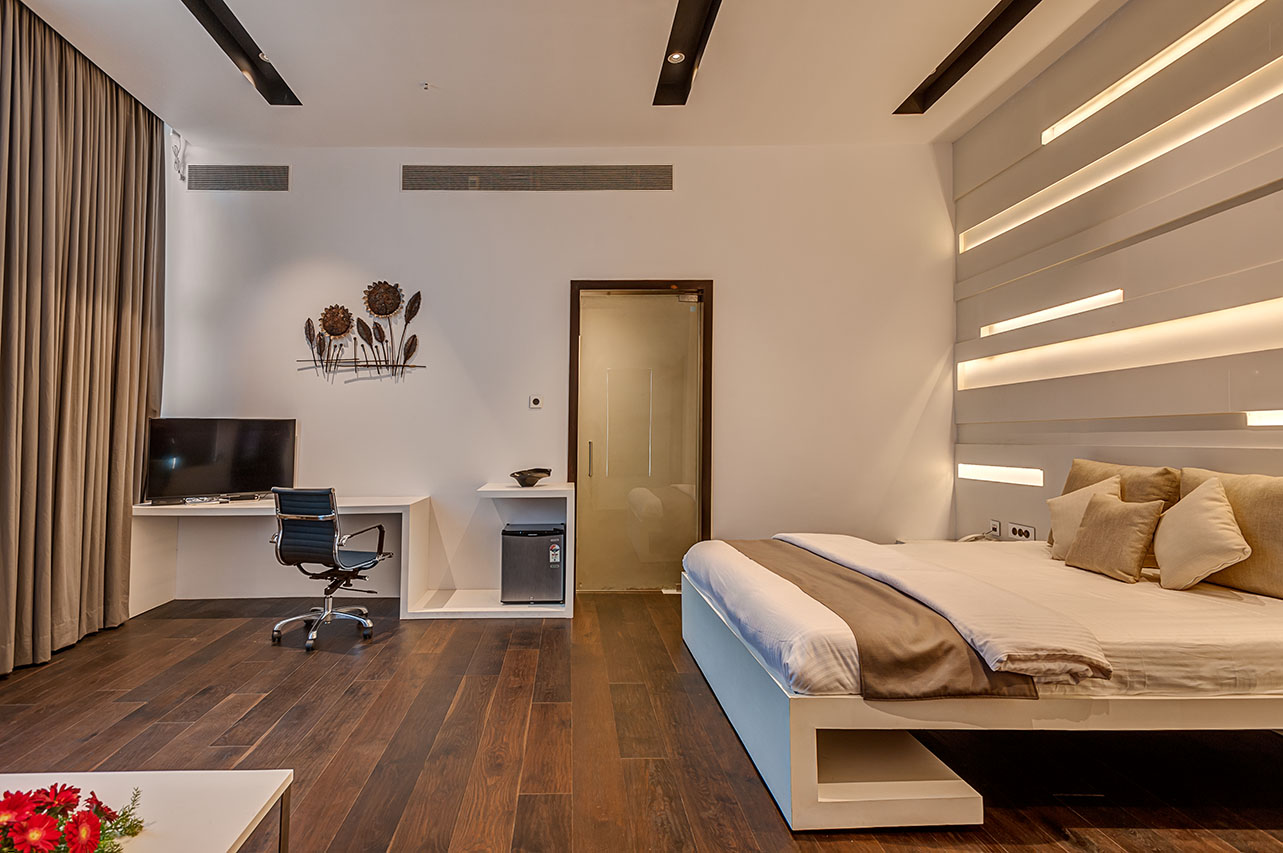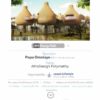Sunil Patil and Associates’ scheme for the VVIP Circuit House, in Pune, India, is a peculiar approach to hospitality design that meticulously considers climate and context with its use of a shaded courtyard and louvered facade elements.
The India-based firm of architects and interior designers, recently shared with us an extensive look into the design concept and considerations of the project as well as some of the detail behind its sustainability and energy efficiency goals.
Project brief
VVIP Circuit house is government guest house which accommodates VIP, VVIP officials, ministers and a large number of visitors. Though Circuit house is primarily a guest house, it also acts as a node for political meetings, government authorities’ discussions and conferences. Circuit houses mainly function as official destinations to carry out various official government activities and hence it automatically reduces the scope for leisure activities in this building.
As a guest house, the building has to have cozy ambience as well as capacity to accommodate the large crowd. The support facilities are also very essential of hotel standards. The occupancy in this building can vary largely. With VVIP ministers coming into the premises; occupancy can reach up to 100% also.
The project is designed as a green building and registered for GRIHA certification in five star category.
This VVIP circuit house has three types of suites:
- CM and DCM suite
- Class I suite (18)
- Class II suite (15)
The support facilities include:
- Dining (100 people)
- Conference room
- Services – Pantries, laundry etc.
Site, context and climate
The site is located in the core of cantonment area of Pune. The site has existing buildings – VIP Rest-house built in post modernist style. On east side of the site, there is golf course which offers the view of landscape. Being in cantonment area, the project has restriction of ground +2 floor building.
Pune district is located between 17.5° to 19.2° North and 73.2° to 75.1° East. It forms a part of the tropical monsoon land, and therefore shows a significant seasonal variation in temperature as well as rainfall conditions. Climatically,the western region of Pune is cool whereas the eastern part is hot & dry.
Pune city falls in between the zone of hot & dry & wet-humid region. As a result Pune shows three distinct season-hot –dry summer, wet- humid monsoon, & winter.The temperature of city ranges between 12°C to 37°C. The average rainfall recorded is 600 to 700 mm. Maximum rainfall is observed from June to September every year. Owing to its geographical location, the climate of the city is cool and pleasant for most of the time in a year. The summers are crucial and needs to be dealt with through climate responsive architectural strategies.
Design Concept
Architecture shall adhere to its time, the era, in which it is built. In fact, Architecture has always been referred as calendar to determine the period of different civilisations.
In last two decades, in India, post modernist architecture has been detrimental to the growth of architectural style with the time. It is quite prevalent in government buildings which are still following the European historical architectural styles, instead, it would be appropriate to follow the vernacular ethos in architectural planning in contemporary style. Here is an attempt to calibrate the architectural style of government building with the time – Contemporary vernacular architecture
Even today, there are hardly any high standard rest-house facilities available for government officials. The existing facilities are designed with poor planning, resulting in lack of daylight and natural ventilation, often with chaotic extensions of building and hence consuming very high energy.
Our focus here is to design the climate responsive building with passive strategies for thermal and visual comfort along with innovative active strategies to achieve energy efficient green building.
The planning is derived from vernacular architecture – The shaded courtyard, transition spaces like passages and terraces, jalis in form of louvers carry vernacular ethos in highly contemporary architectural style in this building.
Hence, the climate, the site and time are basic parameters of design for this project leading to the contemporary vernacular architectural style.
Zoning
The appropriate zoning and circulation, considering all classes of people has been a key point in the design avoiding the conventional chaotic look of circuit house.
Campus level zoning – The site of 14 444 sqm has an existing circuit house building. The new circuit house building is placed with large foreground and without disturbing the existing circuit house. The building is placed in such a way that all the major trees are saved.
The parking of 100 cars is planned in basement, which allows ground to be left for landscape and existing trees are saved.
Building level zoning – Circuit house is normally perceived as building with chaos and disorganised crowd. The most important criteria is to segregate private areas and public areas and allow smooth circulation of all classes of visitors. For this purpose, entries have been separated – Main visitors’ entry, VIP entry and service entry.
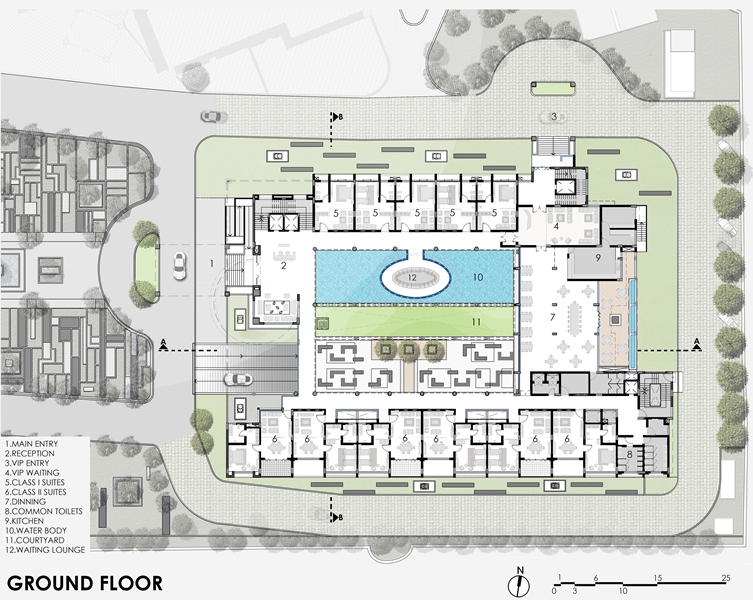
In main building, orientation is a primary criterion to zone different functions. The building faces west side, which is kept empty to avoid harsh radiation and suites are placed on north and south. The east side has dining area, CM and DCM suites where view of the golf course is availed to these important areas.
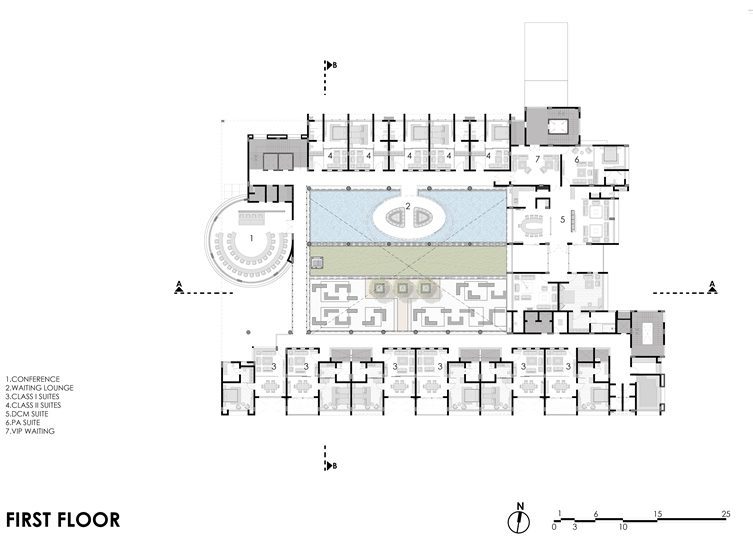
The planning of this main building is derived from vernacular architecture – The shaded courtyard, which is a focal point of the building, and passage around it leading to suites is a highly contemporary version of the ‘old chowk’ of traditional Wadas of Pune
Evolution of form
This is holistic process of architectural design and based on few basic parameters. The form has been derived from functional and climatic requirement of the spaces.
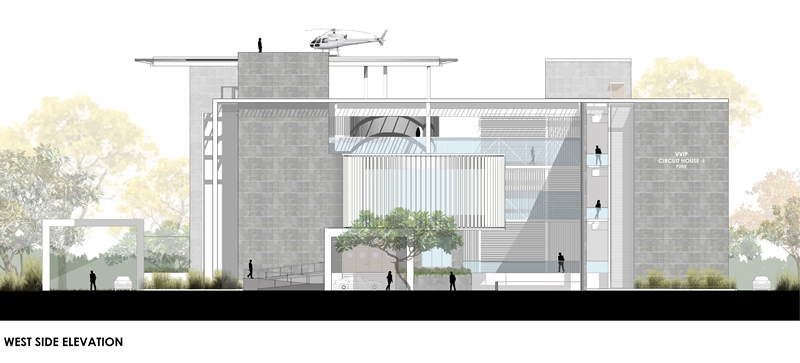
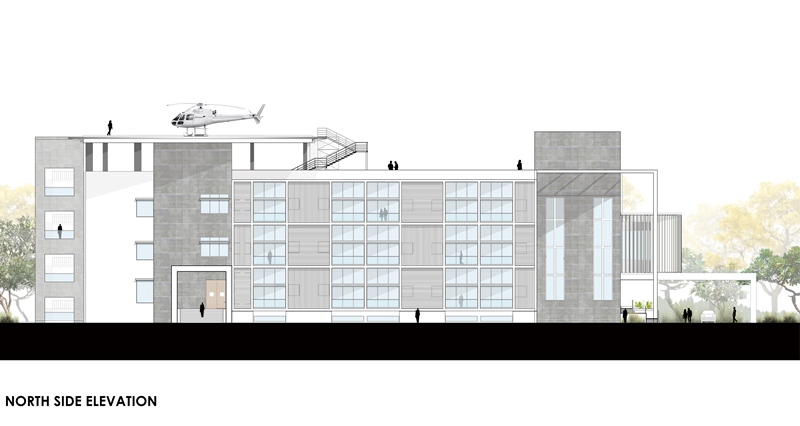
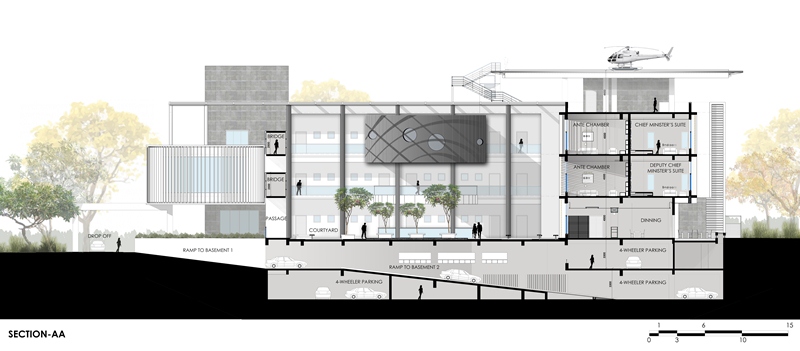
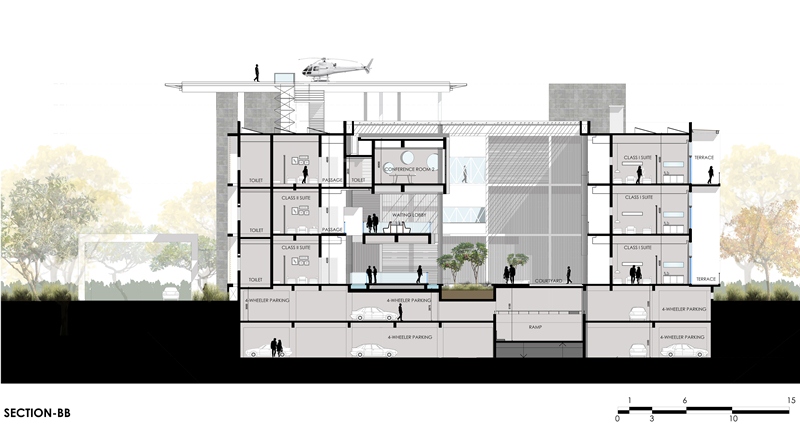
Green Features:
Architecture is a great responsibility to strike the right balance between human aspirations and our eco-system. The sustainable green architecture is a no more a distinction as a design concept, in fact it shall be the basic ethos for all the development on the earth.
Orientation and planning :
The building is oriented East-West. The residential zone lies on the north and the south, where the solar radiations can be cut with the help of shading devices yet allowing good ventilation. West side of the building comprises of intermittent spaces. As these spaces are occupies for short time span, the harsh western sun does not affect the occupants directly. The east side has dining area, CM and DCM suites where the morning sun is taken care of by the overhangs. The Courtyard is covered with pergolas which creates semi-shaded open area. The courtyard acts as micro-climate modifier with landscape and water body in the courtyard. Water body also help is evaporative cooling in hot-dry summers of Pune.
Shaded Courtyard:
The courtyard building is a traditional & effective configuration for cooling in hot-arid climates, where there is a large diurnal temperature swing.
It forms the focal point in the entire building and also acts as a waiting lobby for the outsiders ,which actually redefines a chaotic situation in case of crowd. One can enjoy the water body with a shaded courtyard & the diffused daylight, thus, having a pleasant feeling of being in context with nature.
Climate Responsive building envelope
The facade of the building is very crucial element as it directly related to thermal and visual comfort. Each facade in this project is derived from its orientation and function.
North Facade: North Side receives very less direct solar radiation as well as direct sun light throughout the year; hence this side is most preferred for suites. There is Diffused radiation for most of the year. Overhangs are designed to cater to summer sun.
South Facade: South side of building exposed to sun during winter solstice results in heat gain and glare. Glare and radiation gains are caused by angle of the sun above the horizon as seen in a section view parallel to sun’s azimuth.
South facades are designed in such a way that terraces form a buffer between outside and main facade for 50% of the facade and for remaining part 150 mm wide louvers placed 250 mm c/c in order to get light and thermal environmental comfort in the months of January to November.
East Facade: East facade is critical only for morning hours. To deal with the sun, shading devices are designed.
West Facade: West facade is the most critical as it receives maximum solar radiation. To avoid this heat gain, most of the facade is dead and only ancillary spaces are planned on this side. The conference on west facade is secondary activity and used for shorter durations. The vertical louver are planned for the conference to avoid the solar gains.
Eco-friendly materials
Materials are very important part of the design as they directly affect the energy efficiency of the building. In this project AAC blocks have been used for walls which results in reduction in non-structural weight of building. This blocks are fixed with adhesives where no curing is required and cement mortar has been avoided completely. Direct application of plaster of paris was possible here due to finished AAC block masonry. There is major saving in mortar and water.
- Recycled ceramic tiles have been used for flooring in suites and granite has been used for all common areas.
- Minimized solar heat gain and maximized daylight areas are seen in the building due to use of efficient glass.
- Heat gains have been reduced due to use of effective roof insulation
- Utilization of fly ash in reinforced concrete and masonry mortar is up to 35%
- Exposed concrete is used as a permanent finish to the building to avoid the repeated maintenance requirement.
- Louvered facades have been created which has resulted in achieving the diffused natural daylight. It has also enhanced the harmony between the inner & outer environment.
- In interior works FSC certified wood based materials and all Low VOC materials have been used.
Passive Cooling strategy (Ventilation strategy)
The ventilation strategy for this project aims at encouraging use of natural ventilation and reducing HVAC demand. All the common areas of the building, such as reception, waiting’s etc are naturally ventilated.
For dining area is naturally ventilated along with fresh air is supply though evaporative cooling unit.
All the suites and conference room on run on VRV air-conditioning which is designed considering 50% occupancy. The suites are designed with openable windows so that occupant is encouraged to open the windows unlike conventional star category hotels.
Water management
Water management is done through various strategies. There is reduction in irrigation water demand by 48%. Sewage tratement plant is installed on site and the treated water is used for irrigation. With use of efficient water fixtures 50% savings in building water against conventional fixtures. Again the waste water has been utilized for landscape irrigation.
Transition spaces
Transition spaces play an important role in harsh climates, where there is a large environmental distinction between external and internal thermal conditions. Traditionally in such climates, transition spaces are found in different forms like courtyards, verandas, loggia, balconies and corridors.
As transition spaces act as a buffer between outside & inside ,they offer a linear, sequential experience to moderate thermal conditions. These spaces are very close to the outside environment but are protected from sun & rain. The principal areas of the building gain advantage in maintaining the desired thermal comfort levels with the help of transition spaces. The suites on south side have terrace on exterior façade and then passage and then courtyard. This sequential experience plays very important role in achieving comfort.
Helipad
Circuit house is designed with 24m dia helipad. With large number of ministers coming in the city, helipad becomes very essential in saving time and man-power. This is a green concept as this will help to lessen the security expenses as well as traffic congestion caused during the arrivals of VIPs. The helipad is very efficiently connected with VIP guest areas.
Artwork
In this project, there are 225 pieces of art which include paitings, sculptures , murals and wall arts. This artwork in based on theme -“ Care for Earth and Nature”. This message is passed on to visitors through the art by 30 local artists. This concept also encourages local art and also adds to the interior décor.
Energy efficiency
- 52.81 % reduction in building energy performance index is seen in this design.
- 22 kW solar photovoltaic renewable energy plant is designed to cater more than 30% of artificial lighting.
- Heat pump based hot water system for 90% of hot water demand is installed in this project.
- Air-conditioning is design with VRV system.
Execution as green building
This project has been green in all aspects. Right from design to execution, all the care has been taken care in favour of green building. Activities like top soil preservation, Utilization of existing development and transport corridors on site, effective erosion and sedimentation control, preserving existing trees on site, pollution control on site for vehicular movement in and out of site,curing with help of gunny bags etc were followed. Also, labor health, sanitary and education was given prime importance.
Landscape and Ecology
Landscape is integral part of the project. Architecture and landscape have to co-exist. With this ideology, landscape is been designed with same architectural language. The landscape in this project seamlessly merges with spaces and becomes inherent feature of the project. The courtyard in design with green area which allows the front landscape connects with golf course on rear side. The continuity is maintained though bamboo plantation in the court. The seating is designed with pebble courts creating formal – informal zones within the landscape. The water body adds to the ambience – both visually and physiologically.
The landscape in front is continuation of courtyard following simple linear pattern. The granite platforms laid in landscape become seating as well as platforms for sculptures. In harmony with exiting trees, new native trees have been added which help in maintain the ecology of the site.
The hard paving on site is reduced by 58.6% by introducing grass pavers which help in minimizing heat island effect. 100 % outdoor lighting is catered by renewable energy system.
Green interiors in harmony with architecture
Interiors are thought in line architectural spaces. This being VVIP guest house, the elegant ambience is desired but with least maintenance. The theme of nature is carried interior décor and art work, keeping remembrance that “Nature is important and we must care for it”. The décor is minimalist and in neutral pallet with colours added though only artwork. All partitions are designed in theme of trees. The detailing of interior design has gone up to signages which are presented with actual plants.
In all the areas, interior décor shows innovation and originality and seamlessly integrates with architectural style. The style of décor is contemporary, yet it manages to bring warmth which is required in a guest house. The energy efficient light fixtures have been used along with custom made light fixtures from jute and recycled bottles.
In the dining area, pattern of leafs start in the ceiling and continues in the chairs. Every piece of furniture is design with detailing so that at no point, the theme of project is lost.
Would you like to publish your projects? Get Started Here



